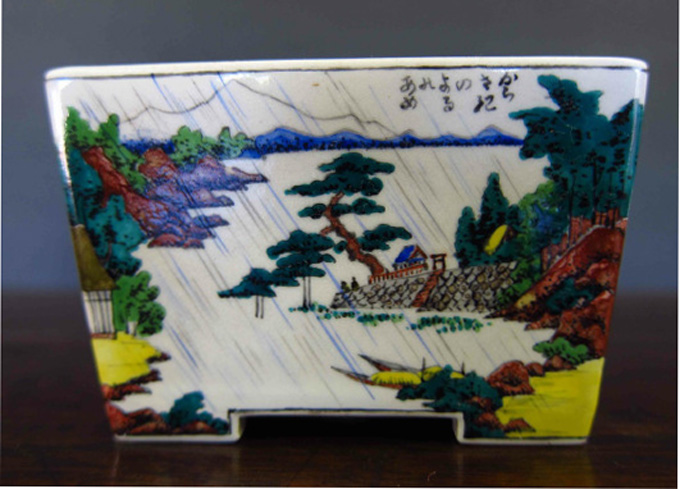 One side of a brilliantly artistic bonsai pot by Miyazaki Isseki. The other three sides and two corner views are below. All the photos in this post are from Sam & KJ’s Suiseki blog, which BTW is one of the better blogs around and well worth a visit.
One side of a brilliantly artistic bonsai pot by Miyazaki Isseki. The other three sides and two corner views are below. All the photos in this post are from Sam & KJ’s Suiseki blog, which BTW is one of the better blogs around and well worth a visit.
I don’t think we’ve ever devoted a whole post to just one pot. But then, it’s not everyday you see a pot quite like this. The way the bright white glaze sets off the brilliance of the colors and artistry of the scenes has made such an impression, that I don’t think I could ever forget it (and forgetting is practically a lifestyle statement for me).
Though it’s hard to imagine anyone not liking this pot (I’m sure there are people that will misplace words like ‘garish’), the big question is; would you ever plant anything in it? If so, what?
What do we know about Miyazaki Isseki? According to Ryan Bell at the Japanese Bonsai Pots blog, Miyazaki Isseki “specialized in tea pottery and other wares, but in 1965 began making some small bonsai pots. His works are very rare, and prices are reflectively very high.” Though I’m sure there’s more out there if you’d like to investigate, that’s the best I could do in a one minute insta-search.
These two corner views show the seamless continuity of the four scenes (that turn out to be just one scene).
All the photos in this post are from Sam & KJ’s Suiseki blog.
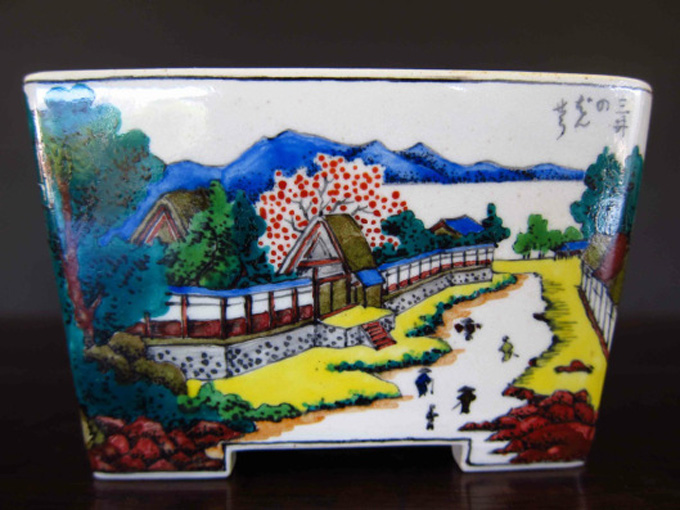
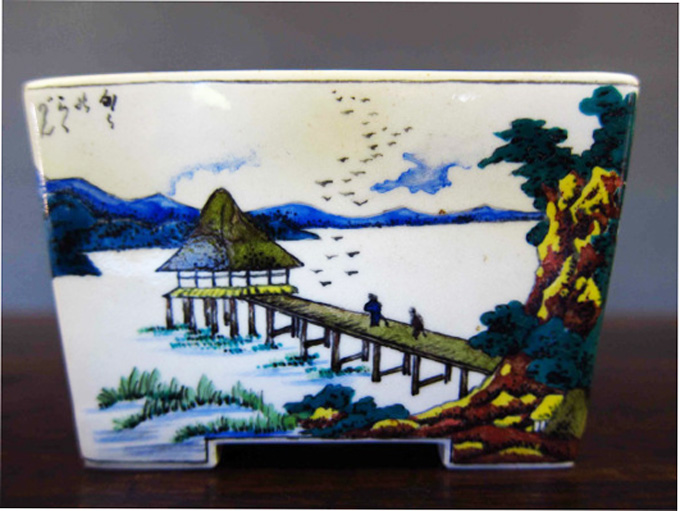
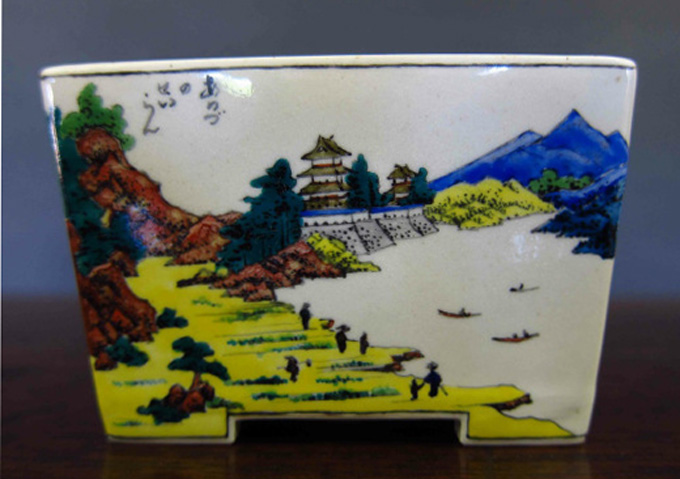

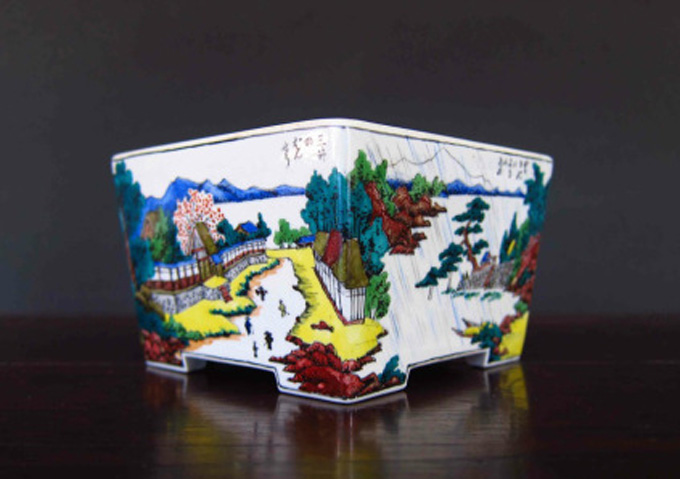
I would try to use this pretty pot, for a outstanding flw. quince ..cascade that would let..those gazing….to focus on the tree….and then look at the beauty…that it is growing in…..gb
Hey Wayne,
Good ping back on this great pot of Sam and KJ’s. Other than that he was from Osaka and his the dates of his life, there’s not to much else I know about him other than what can be seen in his pots. His specialties are akae and go-sai(red and 5-color) and there is a “signature shape” mokko pot that he made, normally painted in red. This signature style of mokko shaped pots is seen very often in Gafu Ten displays: it’s tough not to find a year wherein at least 2 are used. The shape was used so often by Isseki that it’s now commonly refered to as “Isseki style mokko” when a pot from another potter is described.
Thanks Gregr,
Not a bad idea.
Thanks for filling us in Ryan.
BTW: if anyone else is reading this, a peek at Ryan’s blog might be time well spent: japanesebonsaipots.net